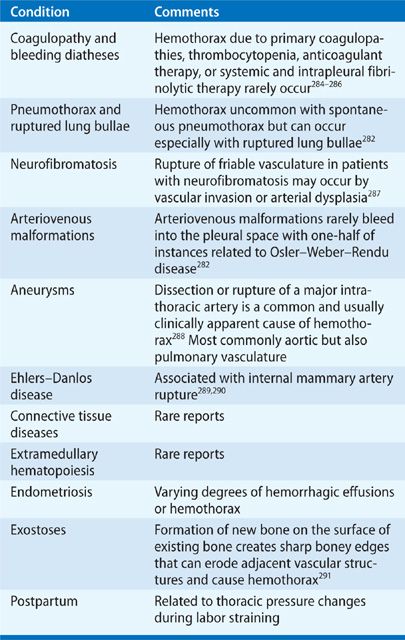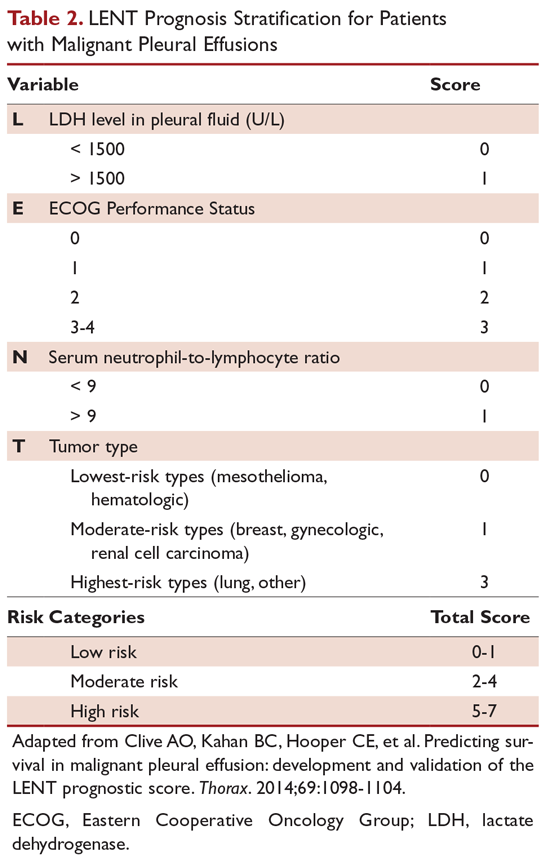What Is The Prognosis For Malignant Pleural Effusion
Common symptoms include dyspnea on exertion, shortness of breath, and cough. Most patients will be symptomatic, although up to 25 percent may be asymptomatic, with the effusion discovered incidentally during imaging for another reason.
Malignant Pleural Effusion Still A Long Way To Go - Researcher An App For Academics
Malignant effusions may change the staging and subsequent prognosis of the underlying cancer.

What is the prognosis for malignant pleural effusion. The most common symptoms that were reported by patients were dyspnea (80%) with a modified medical research council (mmrc) score of 2 (moderate) to 4 (very severe), dull chest pain (30%), and nonproductive cough (10%). What are the symptoms of a malignant pleural effusion? A malignant pleural effusion (mpe) is often the first sign of cancer and it is a prognostic factor in patients with advanced disease.
The main symptom is difficulty in breathing. For lung cancer, typically life expectancy is around 6 months. Studies are contributing evidence on an increasing number of therapeutic options (therapeutic thoracentesis, thoracoscopic pleurodesis or thoracic drainage, indwelling pleural catheter,.
Dyspnea is the most common symptom of mpe. Malignant pleural effusion a malignant pleural effusion (mpe) is the build up of fluid and cancer cells that collects between the chest wall and the lung. We identified 90 patients, with a mean age of 60.6 years.
The severity of these symptoms is often affected by your position, so that you may feel worse at certain positions. For lung cancer, typically life expectancy is around 6 months. Malignant pleural effusion causes uncomfortable symptoms like progressive shortness of breath and cough.
I'm not sure for other cancers as i don't treat them, but i suspect 12 months or less. Like ray's case, surgery was attempted but not completed when they found the pleura malignant from top to bottom. Mpe can be a complication of any malignancy, but in patients with lung cancer, the frequency of mpe ranges from 7% to 23% [] mpe is characteristic of advanced malignancies, but it may also appear in patients with a longer.
This may only be noticeable when a person exercises at first but this could get more noticeable as the amount of fluid gets worse. Pleural effusion was the first manifestation of malignancy in approximately 15% of asymptomatic patients. Diagnoses included suspicious for involvement by carcinoma/adenocarcinoma in 64.4%, leukemia/lymphoma in 15.6%, melanoma in 2.2%, sarcoma in 3.3%, germ cell tumor in 1.1%, and not otherwise specified in 13.3%.
Patients with malignant pleural effusions have a poor prognosis, and pleural effusion is considered metastatic disease. Shortness of breath is the most common symptom, approximately 80 percent of people are seen. Malignant pleural effusion is complexity, which involves the accumulation of fluid containing cancer cells between the membranes, which form the lungs.
Almost half of the affected people that develop malignant, or any kind of pleural effusion experience breathing problems like dyspnea and heaviness in the chest. [ 18, 19] the most common. The clinical history of patients with malignant pleural effusion (mpe) can be variable.
Malignant pleural effusion (mpe) is a common and important clinical condition. So, i guess every case has it's own time schedule. Once the condition is diagnosed, the underlying cancer that is leading to this complication needs to be addressed.
Is sarcomatoid carcinoma curable telegra.ph cause lewis, malignant pleural mesothelioma ct telegra.ph. My spouse had malignant pleural effusion from the very beginning. However, other pleural diseases can have a low pleural fluid ph (eg, malignant effusions, rheumatoid and lupus pleurisy, urinothorax, and saline from a misplaced central venous catheter) (see epidemiology, clinical presentation, and diagnostic evaluation of parapneumonic effusion and empyema in adults, section on 'differential diagnosis.
The most common underlying tumors are lymphomas and cancers of the lung, breast and ovaries, which account for 75% of cases. The prognosis of the patient with a pleural effusion depends on the underlying condition. Most common causes of malignant pleural effusion are lung cancer, breast cancer, lymphoma, and cancer of unknown primary.
681 views answered >2 years ago. Symptomatic malignant pleural effusion is a common clinical problem. It is a fairly common complication in a number of different cancers.
Coughing can occur and this is usually a position so it can be worse in certain positions, such as leaning forward or reaching one side. Development of a malignant pleural effusion is associated with a very poor prognosis, with median survival of 4 months and mean survival of less than 1 year. Diagnoses of malignant pleural effusion (mpe) served as controls.
Respiratory symptoms include breathlessness, cough and chest pain. Symptoms of malignant pleural effusion can be very irritating. Larry's prognosis was 6 months, but he lived for 2 years after diagnosis.
This can cause you to feel short of breath and/or have chest discomfort. This condition is associated with very high mortality, with life expectancy ranging from 3 to 12 months. Best wishes and prayers for you, rosemary
If due to heart failure, cirrhosis, or malignancy, the effusion is likely to recur. If there is a pleural effusion present, then that means the cancer is metastatic. A complication in many types of tumors, its presence indicates the onset of the terminal stages of cancer.
Am j respir crit care med vol. If there is a pleural effusion present, then that means the cancer is metastatic.

Treatment Options For Malignant Pleural Effusions Download Table

Malignant Pleural Effusion 03102017 - Youtube

Survival Of Lung Adenocarcinoma Patients With Malignant Pleural Effusion European Respiratory Society

Erseacts Statement On The Management Of Malignant Pleural Effusions European Respiratory Society

Overview Of The Most Common Malignant Diseases Associated With Download Scientific Diagram
Malignant Pleural Effusion Evaluation And Diagnosis Pulmonary Health Hub

Overall Survival Probability According To Malignant Pleural Effusion Download Scientific Diagram

Prognostic Factors For Survival After Surgical Palliation Of Malignant Pleural Effusion - Journal Of Thoracic Oncology

Algorithm For The Management Of Malignant Pleural Download Scientific Diagram

Management Of Malignant Pleural Effusions The Figure Is Modified From Download Scientific Diagram

Characteristics Of Patients With Malignant Pleural Effusion Download Table

Survival Of Lung Adenocarcinoma Patients With Malignant Pleural Effusion European Respiratory Society

An Observational Study Evaluating The Performance Of Lent Score In The Selected Population Of Malignant Pleural Effusion From Lung Adenocarcinoma In Singapore Semantic Scholar

The Diagnostic Steps In Suspected Malignant Pleural Effusion Table 1 Download Scientific Diagram

Algorithm For The Management Of Malignant Pleural Effusion 36 Adopted Download Scientific Diagram

Malignant Pleural Effusion Management Keeping The Flood Gates Shut - The Lancet Respiratory Medicine

References In Aggressive Versus Symptom-guided Drainage Of Malignant Pleural Effusion Via Indwelling Pleural Catheters Ample-2 An Open-label Randomised Trial - The Lancet Respiratory Medicine

Prognostic Factors For Survival After Surgical Palliation Of Malignant Pleural Effusion - Journal Of Thoracic Oncology

Malignant Pleural Effusions Thoracic Key
